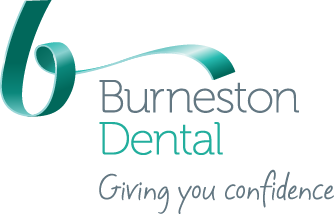Patients quite often ask us about the danger of X-rays and the need for them to be taken. We – the staff – leave the room whilst the patient is exposed to the radiation!
X-ray images are frequently essential in the diagnosis of pain or in the discovery of small lesions in the teeth or gums which are potential causes of pain. We can gain a good deal of information from a simple picture of this type, combined with a physical examination. However, there has to be a justified reason for taking every X-ray, as there inevitably is a tiny exposure of radiation with each one – but the scatter of rays is minimal these days, so only the small area under examination is actually exposed.
The X-ray system we use at Burneston Dental is digital, which means the X-ray dosage is lower than for regular film. After the plates have been passed through the scanner, the images are available on the computer screen, giving us very clear large pictures, with excellent magnification if we need to scrutinise things very carefully. The 4 X-ray units which we have in the practice are serviced and recalibrated annually by staff from the physics department of the Royal Surrey County Hospital, who act as our Radiation Protection Advisor. You can rest assured that our use of this diagnostic tool is closely regulated and dosage is kept to the minimum. This is much reduced from days of old!
As for the dentist and nurse getting out of the way – again, guidelines are strictly followed to prevent any danger to anyone’s health.

This X-ray shows left-hand back teeth with a lot of calculus (tartar deposits) between them. This is very likely to cause halitosis (bad breath) and to lead to periodontal disease. Subsequent loss of the teeth is usually the outcome if not treated.
Have you ever wondered what ‘Downstairs to OPG’ means?

This is the Panoramic X-ray machine which has its own little lead-lined room downstairs at the surgery. The machine moves around the patient during exposures, in order to take an X-ray which shows all the teeth and the jawbones too.
This is an example of an OPG radiograph. It’s used for assessing the condition of the bone around and under the teeth, and for detecting any problems which might exist, such as impacted wisdom teeth.





 © Copyright 2013 Burneston Dental . All rights reserved
© Copyright 2013 Burneston Dental . All rights reserved